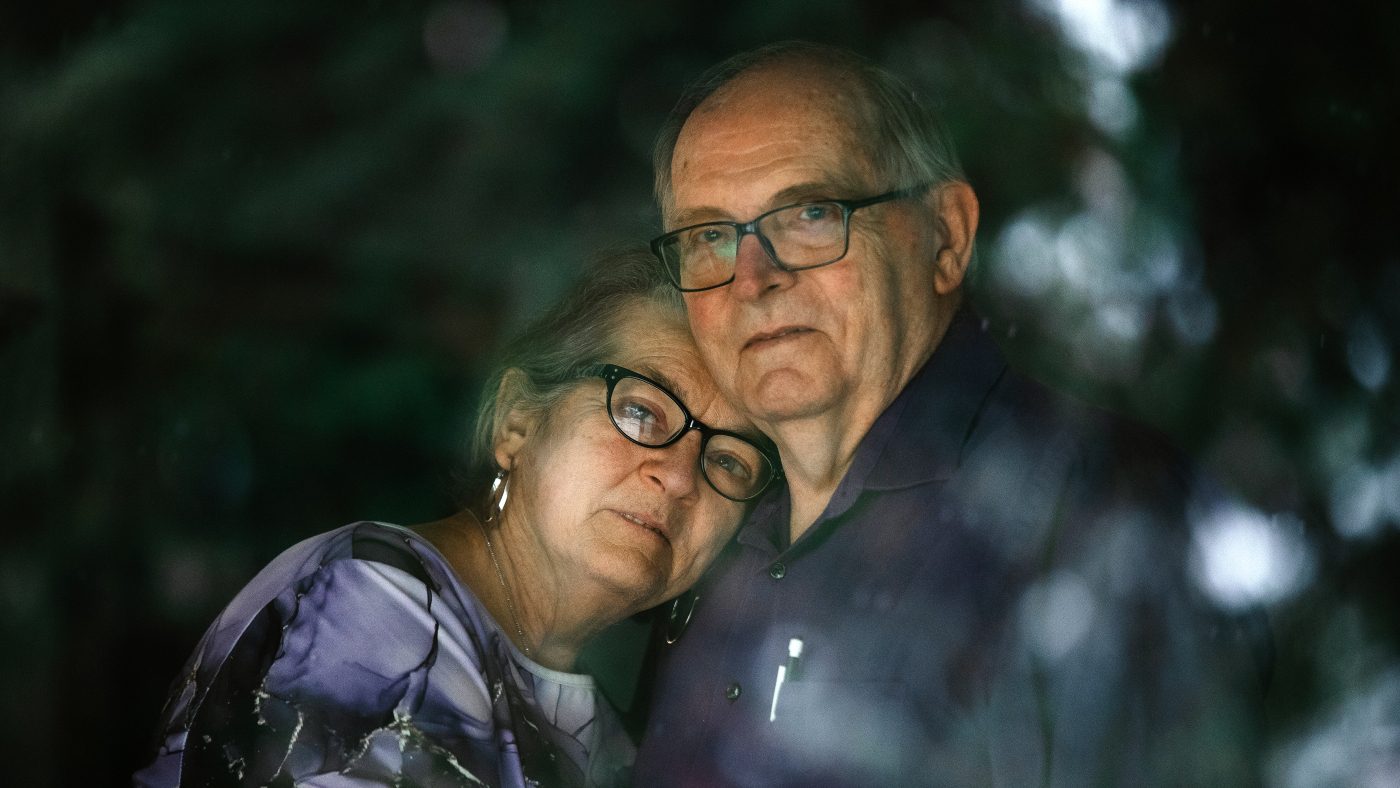

Ione and Doug Whitney, February 2025.
Megan Farmer, WashU Medicine
hide caption
toggle caption
Megan Farmer, WashU Medicine
Individuals who inherit a specific rare gene mutation typically face an almost certain diagnosis of Alzheimer’s disease before reaching 50 years old.
However, Doug Whitney defies this trend.
At 75 years old, Whitney, residing near Seattle, states, “I’m doing quite well for my age and am not exhibiting any symptoms of Alzheimer’s.”
A team of researchers is now investigating how Whitney’s brain has managed to escape its genetic fate.
According to Dr. Jorge Llibre-Guerra, an assistant professor of neurology at Washington University School of Medicine in St. Louis, “If we can determine what is providing this protection, it could lead to new therapeutic strategies for more common Alzheimer’s cases.”
One theory suggests that elevated levels of heat shock proteins found in Whitney’s brain hold the key, as detailed in a report published in the journal Nature Medicine.
These proteins appear to inhibit the spread of a toxic protein known to contribute to Alzheimer’s, Llibre-Guerra explains.
A Genetic Surprise
Whitney’s family has a long history of early-onset Alzheimer’s.
His mother and 11 of her 13 siblings developed symptoms around age 50, with none living past 60, remarks Whitney.
His wife, Ione, witnessed this first-hand.
“During Thanksgiving, his mom had forgotten how to make the pumpkin pie,” she recalls. “The following Thanksgiving, she was already wandering and unable to return home.”
All affected family members harbored a mutated form of a gene called presenilin 2, which leads to the accumulation of beta amyloid and phosphorylated tau proteins, pivotal markers of Alzheimer’s disease.
Upon turning 60 without any symptoms, Whitney initially believed he did not have the mutation. Yet, motivated to aid others, he participated in a study focusing on families affected by early Alzheimer’s.
“After submitting my blood samples, I was shocked to find out I tested positive for the Alzheimer’s gene,” he states.
This revelation was equally astonishing for scientists, as Whitney is only the third person documented to have escaped the consequences of a presenilin mutation.
The other two individuals were identified within a Colombian cohort with mutations to the presenilin 1 gene, while Whitney is unique as the only identified case resisting a presenilin 2 mutation, which occurs on a differing chromosome.
Although all three showed significant beta-amyloid presence in their brains, they surprisingly had minimal phosphorylated tau.
This type of tau, known for its tendency to misfold and spread across the brain, was largely confined to a specific area in Whitney’s brain responsible for visual processing.
“A critical aspect of Alzheimer’s is the widespread presence of tau in the brain,” Llibre-Guerra emphasizes. “That diffusion wasn’t occurring in Whitney’s case.”
The research team is keen to discover the underlying reasons for this phenomenon.
Though they lack a conclusive explanation at this stage, they are particularly focused on the abundant heat shock proteins in Whitney’s brain.
These proteins serve to protect brain cells from elevated temperatures and various stressors, and they appear to inhibit healthy tau from misfolding into the toxic phosphorylated type associated with Alzheimer’s disease.
“It’s possible that these proteins are stopping more tau from misfolding and subsequently spreading throughout the brain,” speculates Llibre-Guerra.
Adaptations from a Hot Environment?
Researchers suggested that the elevated heat shock protein levels in Whitney’s brain might be linked to his life experiences.
“I spent two decades in the Navy, mostly in challenging environments, like the engine rooms of ships—where temperatures often reached 110 degrees,” he notes.
This demanding environment could have triggered an increase in heat shock proteins, aiding in limiting tau’s spread and delaying the onset of Alzheimer’s.
The scientists studying Whitney remain uncertain if this is the complete explanation, yet they hope that their findings will prompt further investigations.
For now, Whitney is committed to contributing to scientific research. Later this year, he plans to return to Washington University in St. Louis, where he has undergone several brain scans, blood draws, lumbar punctures, and even provided bone marrow samples.
Whitney’s aspiration is for researchers to uncover insights that could help shield other individuals from Alzheimer’s illness.
“I would love to witness that development while I’m still here,” he expresses.









